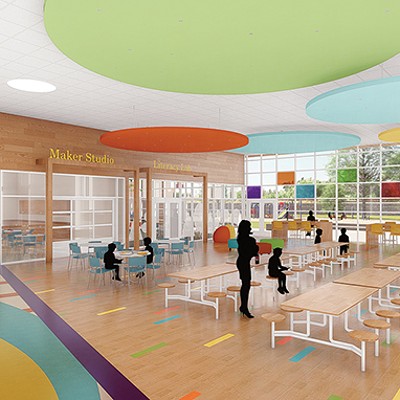The Oklahoma City Public Schools Board of Education voted unanimously Dec. 13 to change the district’s traditional calendar to a “continuous learning calendar,” which features a shorter summer break while increasing the time of fall, winter and spring breaks.
The new schedule has the same number of days as the old one, and allows students who have fallen behind to more easily catch up through remediation during the more frequent breaks, school officials said, and less time will be required to re-teach concepts and procedures students may forget over the long summer break.
“This is a bold step moving the district forward in how we re-focus academics to meet the educational needs of the students of Oklahoma City Public Schools,” Cindy Schmidt, OKCPS chief academic officer, told the board. “The OKCPS Board of Education vote says ‘we are making a decision about students and not about adults.’” The calendar came about in part because of several strategic planning meetings held by school officials involving parents, students, business owners and city officials over the past year.
A full strategic plan is expected to be presented to the Board of Education early next year, but in order to give ample time for people to prepare for the change, the calendar change issue was brought before the board early, said Superintendent Karl Springer.
“During our strategic planning community meetings, parents and teachers asked for dramatic and effective changes to help students be successful,” Springer said. “This plan moves the district to a seamless educational calendar that will have a positive effect on student growth and achievement.”
Springer said he was confident that the move would bring with it a needed change at the district.
“I think what we’re talking about tonight is focusing this whole district on the kids, how we can give them a greater opportunity to be successful. It doesn’t matter what you’re doing — whether you’re a jogger, a musician or a student — not doing anything for 12 weeks isn’t going to do anything good for you,” Springer said. “The time is right. It’s a bold thing for our school district to do. It’s what we need to do to really be able to turn this school district around, causing our kids to be successful.” Sixty-nine of the district’s schools join seven district schools — Sequoyah Elementary, Westwood Elementary, F.D. Moon Academy, Horace Mann Elementary, Rogers Middle, Webster Middle and Douglass Mid-High — already on the continuous learning calendar.
Most of those who spoke at the Dec. 13 school board meeting were in favor of the change, though some board members expressed doubt whether the vast majority of all the district’s stakeholders — students, parents, teachers and administrators — were on board with the change.
“I suspect that the prevailing view out there is not an (overwhelming) majority in favor of the continuous learning calendar,” said board member Phil Horning, who voted in favor of the change.
“We’ve got to move it forward. We’ve got to make bold and dramatic reforms.”
However, the board’s action, along with its approval of a Teach for America contract, did get praise from some on the Oklahoma City Council, which at times has been critical of the district.
“The fact that the school board made the decision (recently) I think says a lot about the extent of community involvement and investment and that idea that we … are really understanding we all have a part in the improvement of the schools,” Councilor Sam Bowman said at a council meeting the morning after the vote.
The City Council is scheduled to meet with the school board in January, where the subject of academic performance is likely to be one of the main topics.
Councilman Patrick Ryan said Oklahoma City voters want to see a return on the investment made in the MAPS for Kids program, the $700 million project responsible for building new schools, renovating existing schools and investing in technology and transportation for the district.
The district’s adoption of the new calendar is a major move toward possibly improving the district’s performance, he said.
“It seems to be a good idea. It was a bold step, and I think the city schools needed to take a bold step,” Ryan said. “I think the citizens deserve some reports for what they’re getting for their money. I think Oklahoma City (Public) Schools has done a better job than they’re given credit for.”
State Superintendent Sandy Garrett also lauded the district’s move, saying that she and Springer took a trip to Boston last year to get ideas for education reform. One of those ideas was a continuous learning calendar, Garrett said.
“He was impressed with what they were doing there. That planted a seed, I believe,” Garrett said. “We congratulate them. I think that is going to make an immense difference because those kids won’t be interrupted by the summer (break) and have a loss of learning.”
In a media release, the district stated that it will hold informational meetings in the near future in order to help educate parents and the community on the new calendar, while a district task force will evaluate the needs for calendar implementation and make recommendations and accommodations.
Old Calendar Classes Begin Aug. 22, 2011 Fall Break - Two days Thanksgiving Break - Three days Winter Break - Two weeks Spring Break - One week School Ends - May 25, 2012
Continuous Learning Calendar Classes Begin Aug. 1, 2011 Fall Break - Two weeks Thanksgiving Break - Three days Winter Break - Three weeks Spring Break - Two weeks School Ends June 1, 2012











